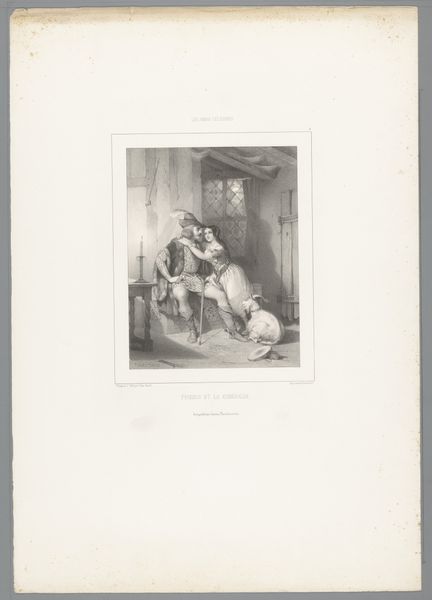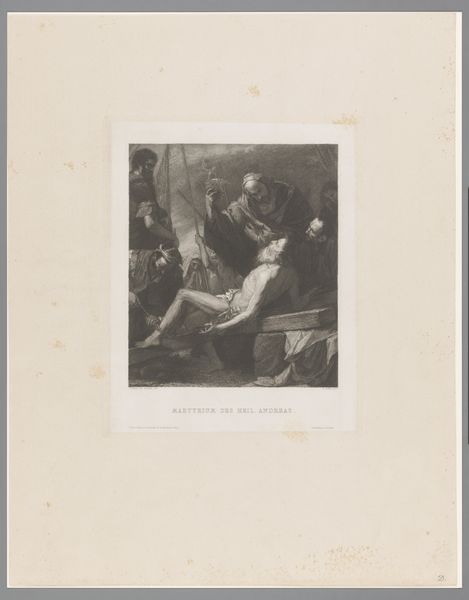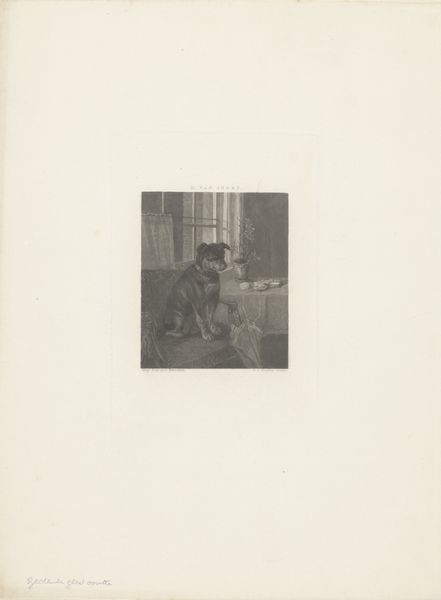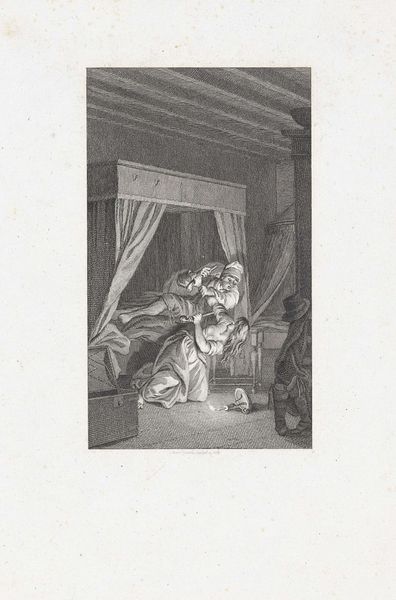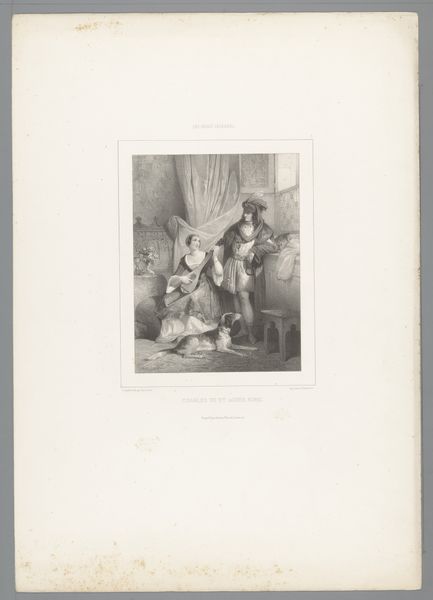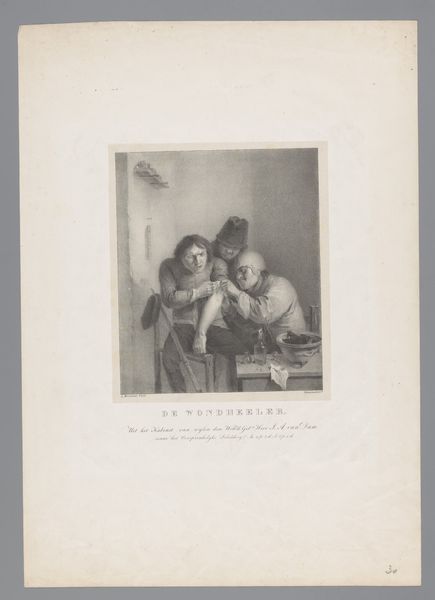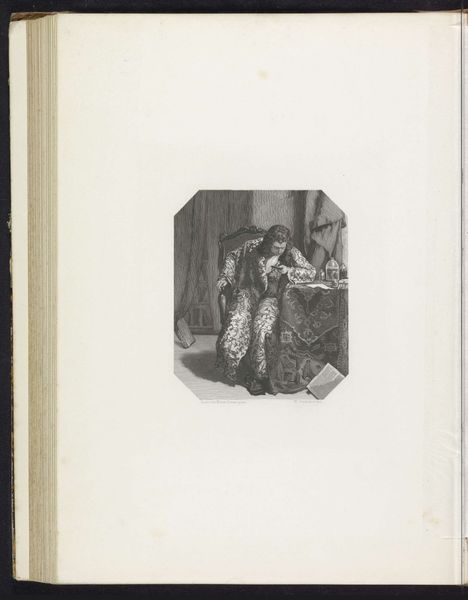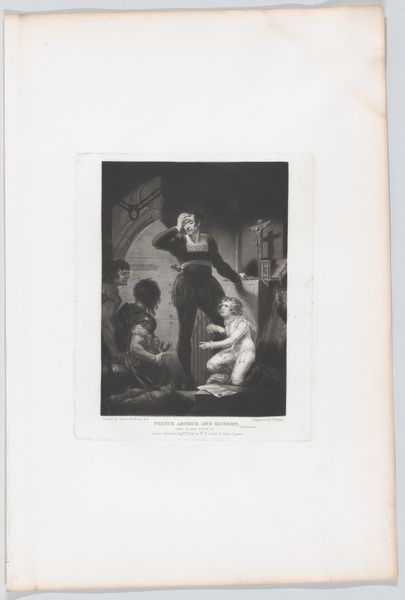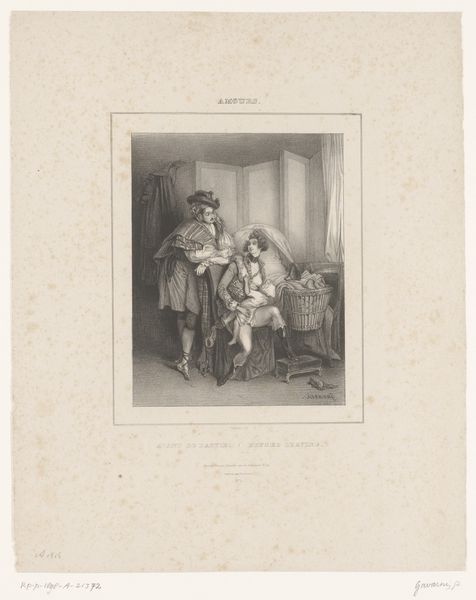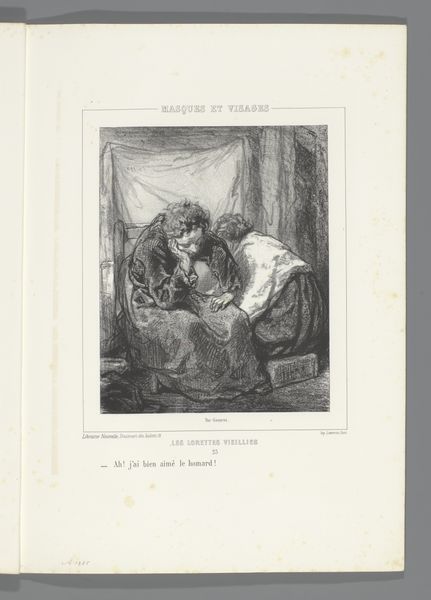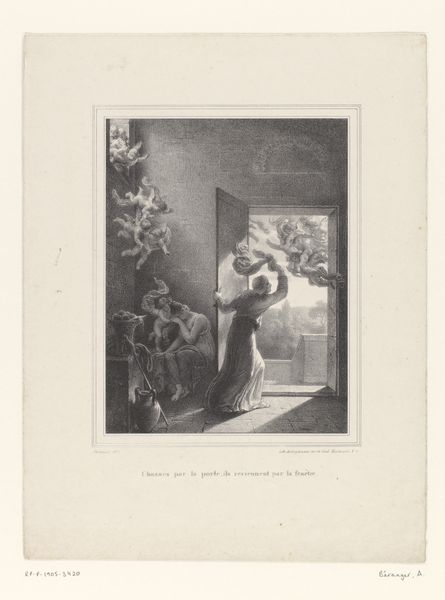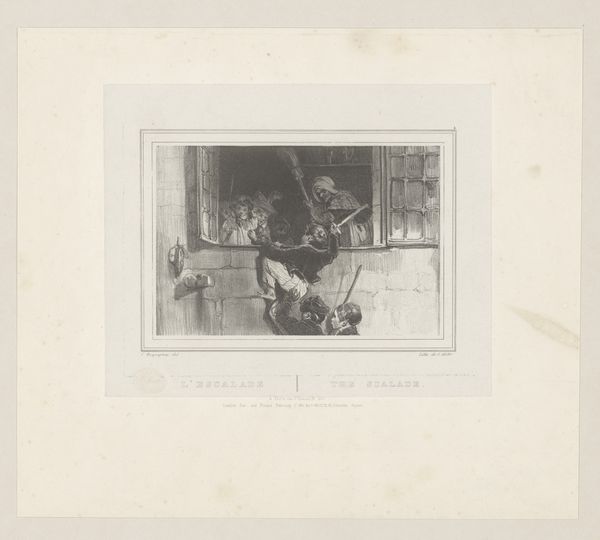
Mary, Queen of Scots being urged by Sir Robert Melville to abdicate (from "Oeuvres de Walter Scott: Histoire d'Écosse," series one, volume 26, chapter 29) 1835
0:00
0:00
drawing, print
#
photo of handprinted image
#
drawing
#
toned paper
#
water colours
# print
#
white palette
#
possibly oil pastel
#
underpainting
#
france
#
men
#
tonal art
#
repetition of white colour
#
remaining negative space
#
watercolor
Dimensions: Plate: 8 15/16 × 5 7/8 in. (22.7 × 14.9 cm) Sheet: 11 1/8 × 7 7/8 in. (28.2 × 20 cm)
Copyright: Public Domain
Pierre-Léonard Dandeleux created this print of Mary, Queen of Scots in France, sometime in the first half of the 19th century. It illustrates a scene from Walter Scott's, "History of Scotland". Dandeleux’s print underscores the political motivations of Scott’s book. We see Mary, exhausted and disheveled, being pressured to abdicate the throne, a deeply consequential moment in Scottish history. Scott’s novel was published in France during the Bourbon Restoration, and it's likely that its readers would have seen parallels between Mary's forced abdication and the recent deposition of Napoleon. The image's visual codes create meaning through cultural references and historical associations. To fully appreciate this artwork, we need to examine not just the print itself, but also the historical context of both Mary's reign and the political climate in France during the 1800s. We might also look at the institutions of publishing and the visual codes of the theatre. This helps us to understand the complex interplay between art, history, and power.
Comments
No comments
Be the first to comment and join the conversation on the ultimate creative platform.
